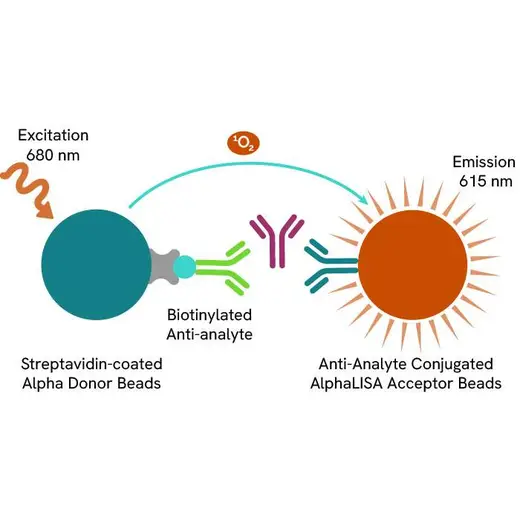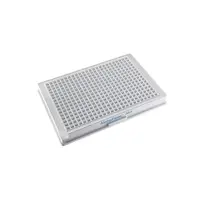
AlphaLISA Human GLP-1 (7-36) Detection Kit, 100 Assay Points














The AlphaLISA® Human GLP-1 (7-36 amide) Detection Kit is designed for detection and quantitation of human GLP-1 (7-36 amide) in cell culture media using a homogeneous (no-wash steps, no separation steps) assay.
For research use only. Not for use in diagnostic procedures. All products to be used in accordance with applicable laws and regulations including without limitation, consumption & disposal requirements under European REACH regulations (EC 1907/2006).
Product information
Overview
Formats:
- Our 100 assay point kit allows you to run 100 wells in 96-well format, using a 100 µL reaction volume (10 µL of sample).
- Our 500 assay point kit allows you to run 500 wells in 96-well or 384-well format, using a 50 µL reaction volume (5 µL of sample).
- Our 5,000 assay point kit allows you to run 5,000 wells in 96-well or 384-well format, using a 50 µL reaction volume (5 µL of sample).
Features:
- No-wash steps, no separation steps
- ELISA alternative technology
- Sensitive detection
- Broad sample compatibility
- Small sample volume
- Results in less than 3 hours
- Half the time of an ELISA assay
The Glucagon-Like Peptide-1 (GLP-1 (7-36 amide)) is a 30 oligopeptide, generated from proglucagon, secreted by the enteroendocrine L cells of the small and large intestine, in a nutrient-dependent manner (some GLP-1 (7-36 amide) is also produced by the pancreatic α-cells and in the central nervous system). Circulating GLP-1 (7-36 amide) levels rapidly increase shortly after ingestion, playing a significant role in the inhibition of gastric emptying and food intake. It is also important for blood glucose homeostasis through the stimulation of insulin biosynthesis and secretion, islet proliferation, and the inhibition of glucagon secretion. Moreover, it regulates hypothalamic-pituitary function and GLP-1 activated circuits mediate the central nervous system response to aversive stimulation. In the circulation, the active form of GLP-1 (GLP-1 (7-36 amide)) is promptly inactivated by the dipeptidyl peptidase IV (DP IV).
AlphaLISA technology allows the detection of molecules of interest in a no-wash, highly sensitive, quantitative assay. In an AlphaLISA assay, a biotinylated anti-analyte antibody binds to the Streptavidin-coated Donor beads while another anti-analyte antibody is conjugated to AlphaLISA Acceptor beads. In the presence of the analyte, the beads come into close proximity. The excitation of the Donor beads causes the release of singlet oxygen molecules that triggers a cascade of energy transfer in the Acceptor beads, resulting in a sharp peak of light emission at 615 nm.
Specifications
| Application |
Protein Analysis & Detection
|
|---|---|
| Assay Points |
100
|
| Assay Target Class |
Peptide
|
| Automation Compatible |
Yes
|
| Brand |
AlphaLISA
|
| Detection Method |
Alpha
|
| Experimental Type |
In vitro
|
| Format |
Microplates
|
| One Unit Contains |
100.0 assay points
|
| Shipping Conditions |
Shipped in Blue Ice
|
| Therapeutic Area |
Metabolic
|
| Unit Size |
100 Assay Points
|
Image gallery












Video gallery



SDS, COAs, Manuals and more
Are you looking for technical documents for this product. We have housed them in a dedicated section., click on the links below to explore.


How can we help you?
We are here to answer your questions.


































